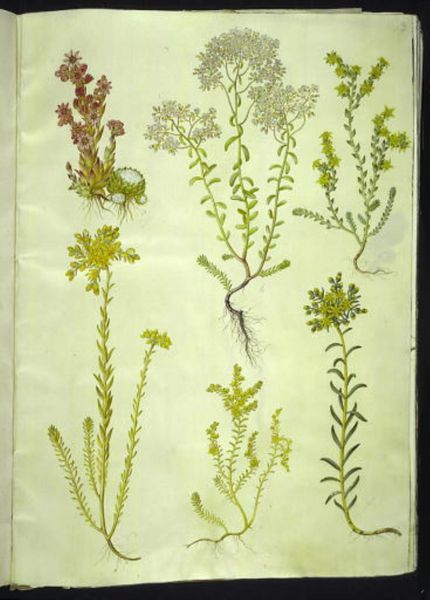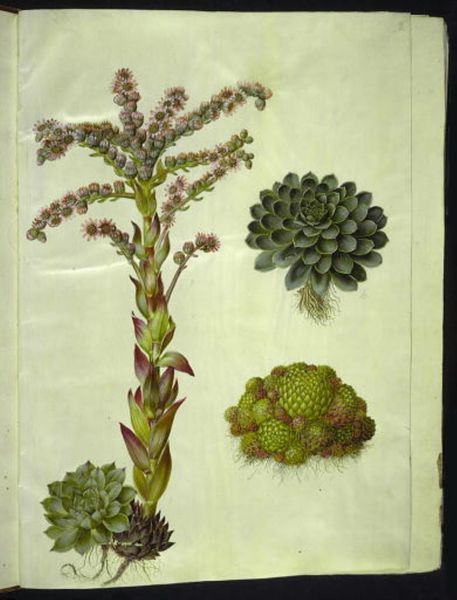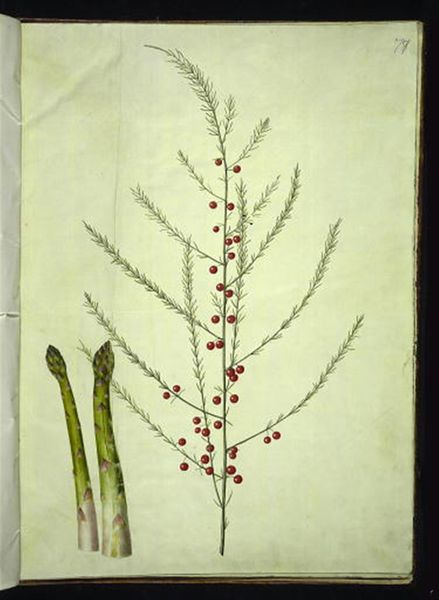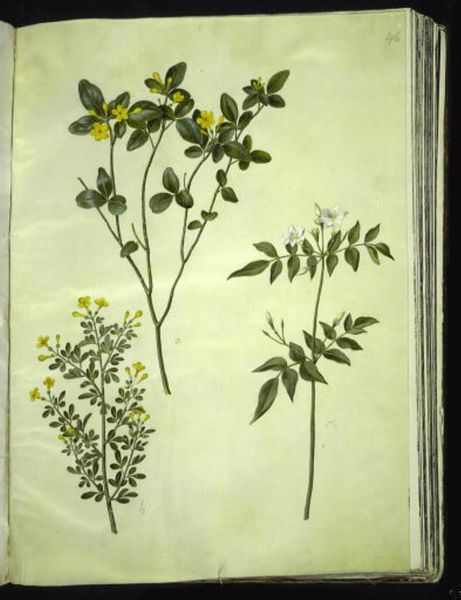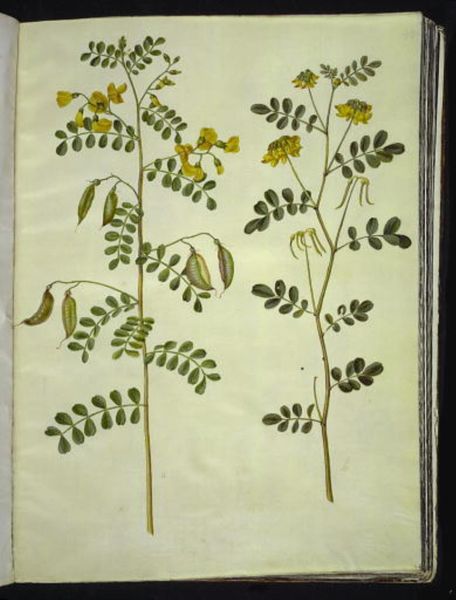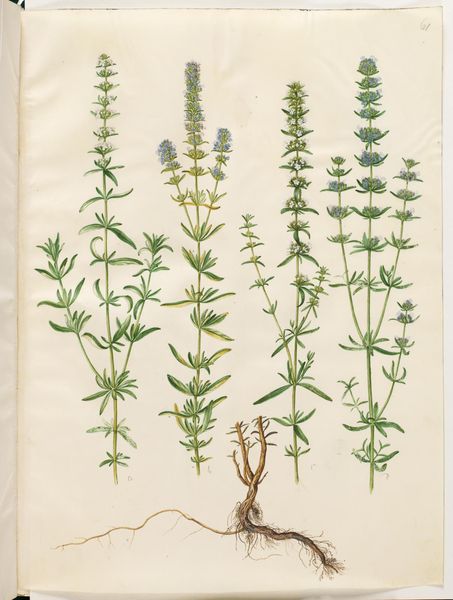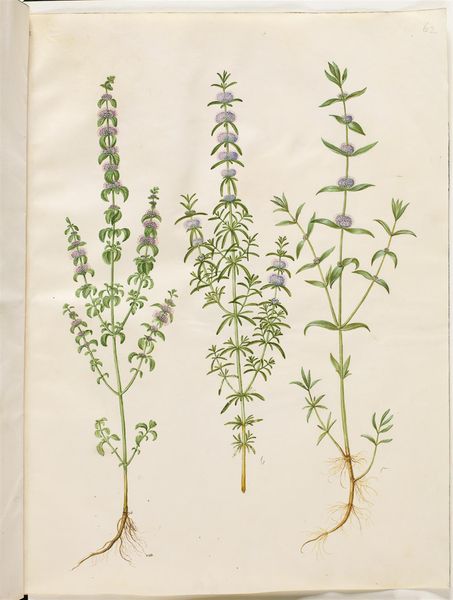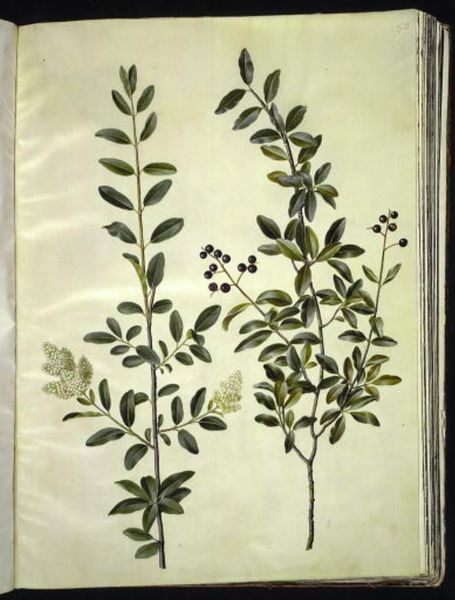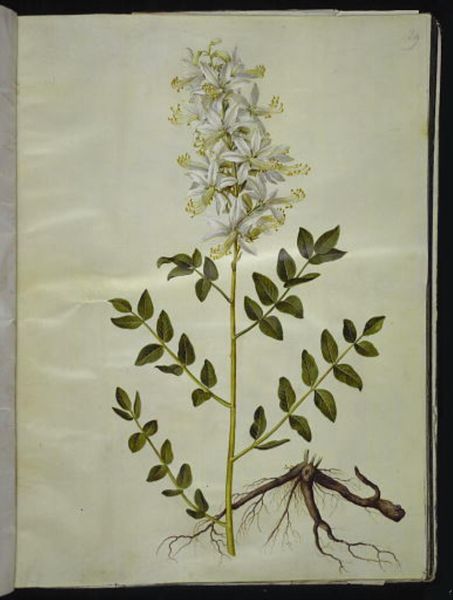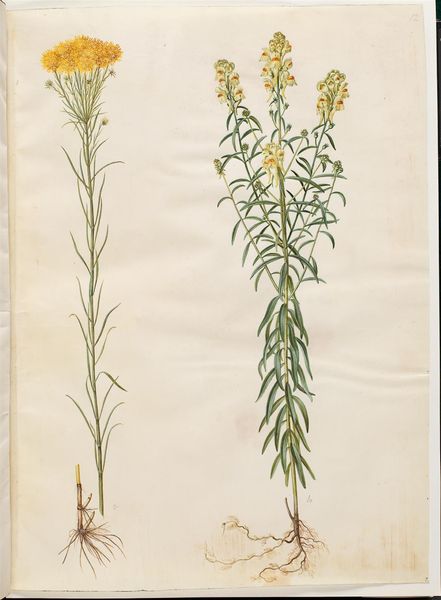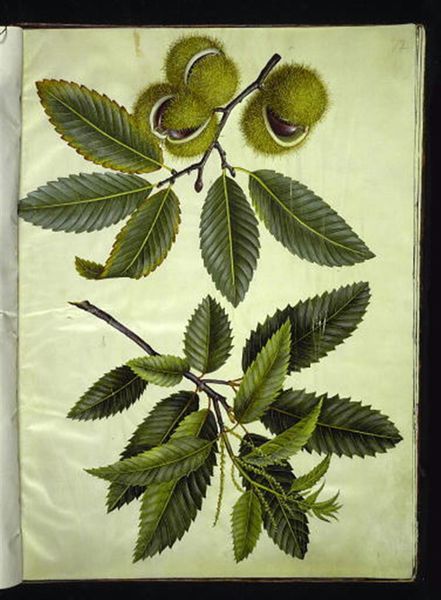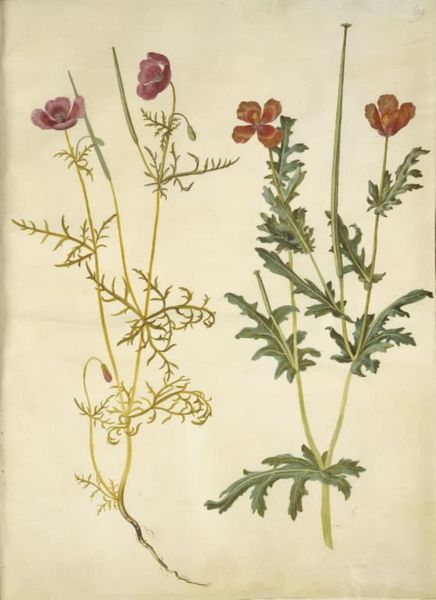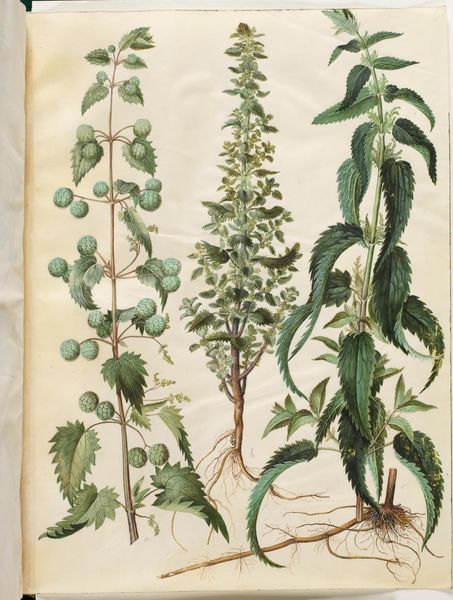
Sedum album (hvid stenurt); Sedum anacampseros (rundbladet stenurt); Sedum (stenurt); Suaeda vera (busk-strandgåsefod); Sedum rupestre (bjerg-stenurt) 1649 - 1659
0:00
0:00
drawing, coloured-pencil, gouache, watercolor
#
drawing
#
coloured-pencil
#
gouache
#
11_renaissance
#
watercolor
#
coloured pencil
#
botanical art
Dimensions: 505 mm (height) x 385 mm (width) (bladmaal)
Editor: We are looking at a botanical illustration titled "Sedum album…" by Hans Simon Holtzbecker, created between 1649 and 1659 using watercolor, gouache, and coloured pencil. The composition of multiple succulents, depicted with such attention to line and texture, it almost appears as a scientific study of sorts. How do you approach such a detailed drawing? Curator: I find the linear precision arresting. Observe the rendering of each leaf, the careful graduation of color, the controlled application of the media. Holtzbecker prioritizes fidelity to the observable form. Ask yourself: what structural elements contribute to this sense of scientific detachment? Editor: I see what you mean about detachment; there’s no romanticism, only meticulously rendered form. Are the spatial relationships meaningful beyond their scientific arrangement? Curator: Indeed. While representational accuracy is paramount, the placement on the page creates a visual hierarchy. Consider the central stem, its verticality asserting a visual dominance against the clustering forms. Does this organization suggest a deeper compositional intention beyond mere cataloging? Editor: I think it does, but I'm still unsure how to decipher it. Are the variations in light and shadow simply for accuracy, or do they perform a more complex function? Curator: Note the evenness of illumination, mitigating stark contrasts that might otherwise evoke drama. This subdued approach allows the intricate morphology of each plant to assert itself. Is this emphasis on evenly distributed light, in effect, communicating something in and of itself? Editor: Perhaps it is to suggest something of equality in nature and the eye. It almost suggests an understanding between art and science… Thank you. Curator: Precisely. Reflecting on Holtzbecker's illustration helps refine one’s perspective regarding artistic methodologies of observing the natural world and opens fascinating possibilities for thought.
Comments
No comments
Be the first to comment and join the conversation on the ultimate creative platform.
